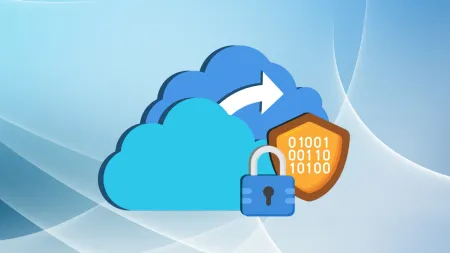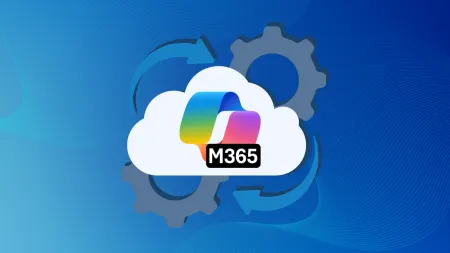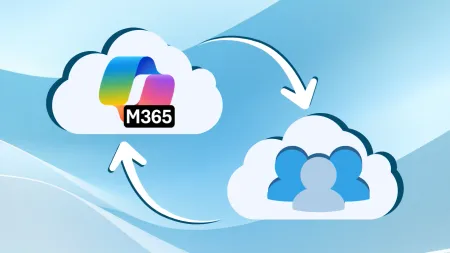Upgrading from Skype for Business to Microsoft Teams
Microsoft has been revamping all aspects of its Skype line The biggest change is in Skype for Business It isnt going away yet but Microsoft is str...

Microsoft has been revamping all aspects of its Skype line. The biggest change is in Skype for Business. It isn’t going away yet, but Microsoft is strongly encouraging migration of all its cloud users to Microsoft Teams. It’s part of Microsoft’s move to “Intelligent Communications” and integration with Office 365.
Why Microsoft Teams?
Microsoft announced Teams in 2016 as “the new chat-based workplace in Office 365”. Its goal was to facilitate communication and information sharing within geographically dispersed groups. It used integration with Skype to include voice and video. In 2017, Microsoft announced that Teams would become the primary client for intelligent communications in Office 365. It would gradually replace Skype for Business.
The aim is to bring voice, video, and chat communications into a single environment that minimizes the need to switch contexts. Calling and conferencing became new features. In August, Microsoft announced that the process of bringing all features of Skype for Business into Teams was complete.
Who Needs to Upgrade?
No one is being compelled to drop Skype for Business at this point or in the near future. Microsoft encourages businesses to keep using both products until they complete their own transition. New Office 365 customers with 500 seats or fewer, starting in October, will be set up with Teams and won’t have access to Skype for Business. Automated upgrades will be available to partner associated customers starting in November.
Organizations that are making full use of Microsoft’s cloud applications are in the best position to migrate. Many of them are likely using Teams already. Teams is a distinct product from Skype, not a rebranding, so users will need to learn new ways of using familiar capabilities. The curve won’t be a difficult one for people experienced in Office 365, though.
Businesses that don’t want to move their communications to the cloud can follow a different path. They can run Skype for Business Server on their own hardware and let their users continue to run Skype for Business. The 2019 edition will be available in the near future. Organizations can choose hybrid connectivity, combining some Microsoft cloud services with an on-premises server.
What Will Change?
 Video conference meeting.
Video conference meeting.
If you’re new to Teams, start by reading our guide to Getting Started on Microsoft Teams. Calling — the focus of Skype for Business — is one of the four main features of Teams. You can use Teams just for that purpose, or you can start taking advantage of its other features.
It’s the availability of those additional features which really makes the difference. Users will discover the possibilities that come from combining calls, meetings, chat, and file sharing. They can even add third-party applications to Microsoft Teams. In many cases, they’ll keep Teams open all day and handle all forms of communication there.
New Features in Teams
Even after achieving full Skype for Business equivalence, the Teams developers have been adding many features. The Ignite Conference in September brought forward a new set of capabilities. Here are some of them:
- Playback of recorded content for meeting participants who were unable to attend or want to review the meeting.
- In videos, a blurred background. This not only eliminates distractions but reduces the chances of accidentally giving information away.
- Secure image annotation, where images can be shared only under security constraints.
- Secure priority notifications.
- Integration with legacy video conferencing devices.
- Home, a timekeeping feature for workers.
- Shifts, a timekeeping feature for managers.
The image annotation and priority notification features are aimed at clinical environments, where secure and private communication is legally required, but can be used for any purpose. More healthcare-related features, including a connection of Office 365 with Electronic Health Records, are planned for the near future. The Home and Shifts features replace features in Microsoft StaffHub, which is being retired.
The Ignite announcements included the introduction of a certification program for devices that can be used with Teams.
The Migration Process
Microsoft has provided a framework for moving from Skype for Business to Microsoft Teams. Its major steps are:
- Bringing the project stakeholders together.
- Defining the project, including its scope, goals, and timeline.
- Achieving technical readiness, including the presence and quality of all needed components.
- Achieving user readiness by conducting training and taking steps to ensure acceptance.
- The process of deployment and implementation includes setting up a pilot group before rolling the change out to all users.
- Maintaining operational excellence entails keeping up with system issues and adopting new features.
Automated upgrades will be available for organizations that want to move from Skype for Business to Teams with a minimum of fuss and customization. Organizations with the resources and the need for detailed control can manage their upgrades to meet their specific requirements.
The framework defines two options. Upgrade Basic is suited for small customers or ones with simple needs. All users can upgrade together. Upgrade Pro is appropriate where the deployments are more complicated. It makes room for a phased upgrade.
With either option, users get switched over to Microsoft Teams when the administrators are ready. They will get a notification in the Skype for Business client. Calls that previously would have come in on Skype will come in on Teams. The users should get an email in advance, to make sure they’re aware of the coming change.
The change won’t be difficult for users, as long as they get sufficient notice of it. Administrators will need to learn how to manage a more powerful piece of software from the Admin Center. Teams lets them configure policies at the global, group, or individual level.
A Smooth Transition with New Opportunities
The keys to a smooth software transition are planning, preparation, training, and monitoring. There are always issues, but taking these steps will minimize their impact. Start with a pilot group and deal with any problems it encounters. Keep all users informed of the transition schedule. Allow enough time for people to familiarize themselves with the new system. We have an expert team to help you manage your migration from Skype to Teams. Get in touch with us to learn about our services.





